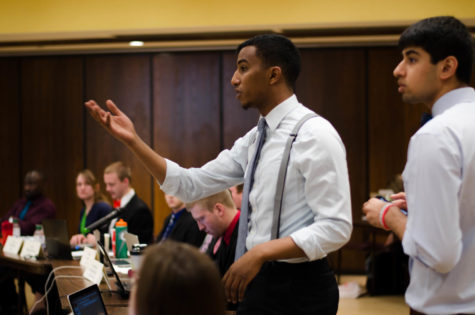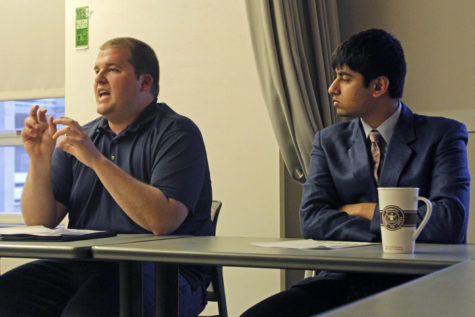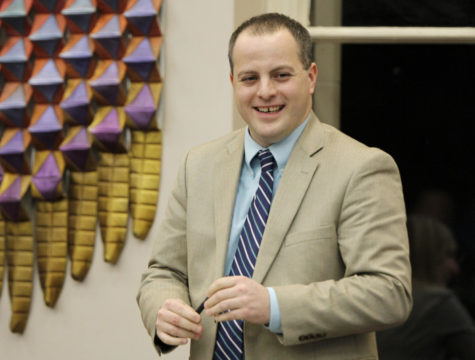A Cyclone Century
December 9, 1999
Editor’s note: This is the eighth article in a 10-part series examining significant events and the climate of the campus at Iowa State in each of this century’s decades. The stories are based on articles from the Daily during those time periods. Today’s article will look at the years 1980-1989.
It was during the 1980s that Iowa State and its students really started to shape into a form that is similar to today’s ISU.
The decade started out possessing much of the same flavor that the 1970s had at its end. Big hair was the rage, as was disco and tight, multi-colored pants, obvious in photographs of students in the Daily from the early 1980s.
But all was not well in the country. The early- and mid-1980s were some of the most tense years of the Cold War, and ISU students could not escape the worries that possible danger presented.
The subject of nuclear weapons, dealing with anything from the arms race to nuclear winter to fallout shelters, was a subject of constant discussion in lectures at the university and in the editorial pages of the Daily.
In 1982, one ISU graduate student conducted a bus tour during Ground Zero Week, explaining to Ames residents and ISU students what would happen at differing lengths from ground zero if Ames were, for some reason, the target of a one-megaton nuclear weapon.
And nearly every week brought a lecture from a pastor, lawyer, scientist, pacifist or politician on some aspect of the Cold War.
The Government of the Student Body even got in on the act, attempting to pass a resolution in 1985 that would urge ISU scientists not to take part in research for the national defense system (commonly known as Star Wars) planned by President Ronald Reagan. The resolution eventually failed after a lengthy debate.
The 1980s also saw one of the most saddening tragedies in university history. On Nov. 25, 1985, a university plane flying four members of the women’s cross-country team back from their best-ever second-place finish at the NCAA championships crashed in a residential Des Moines area, killing all seven individuals aboard. Each of the deceased, even the pilot, had strong ISU ties, and the university community mourned the catastrophe for weeks, holding a memorial service in Hilton Coliseum.
ISU President W. Robert Parks, who had held his post at ISU for a record 21 years, stepped down a few months after the plane crash in 1986 and was replaced by Gordon Eaton. Eaton came from Texas A&M, where he had served as the provost and vice president.
Under Eaton’s direction, the Black Engineering building was built in 1986, and the Durham Center was built in 1989.
The other main piece of campus construction during the 1980s was the addition to and dedication of Parks Library, named in honor of President Parks and his wife.
The issues facing ISU students during the 1980s were often times identical to issues with which current students are wrangling. In March of 1982, student radio station KPGY (predecessor to KURE) had problems getting GSB funding, and it claimed to serve the residence halls first and foremost.
Editorials and news articles in the Daily claimed that students were apathetic toward student government and world issues, and the small amount of activism that was present on campus even in the later years of the 1970s was noticeably absent.
The Men’s Hockey Club even then was trying to gain varsity status, students were debating whether Department of Public Safety officers should be allowed to carry weapons, and student governments tried to improve the lighting on campus. All three of these issues are as prevalent on campus right now as they were more than 10 years ago.
It was during the 1980s that another current student issue began to rear its ugly head — tuition/room and board hikes. Tuition and room and board always had increased from time to time and sometimes in consecutive years, but during the inflation-stricken 1980s, students watched these hikes become steeper (often as much as 7 to 10 percent) and more frequent.
Perhaps the most controversial issue for students right now, dry Veishea, can claim its roots in the 1980s. It was in 1988 that the first true Veishea riot occurred. After police broke up a Welch Avenue house party at about 1 a.m. on May 8, as many as 1,500 students spilled onto Welch, almost filling the 500 block and lighting couches and other materials on fire.
Although there was only one arrest, this disturbance (as well as a lesser one during the Veishea of 1985) laid the foundation for further violence during the student-run Veishea celebration.
At the time, it was impossible for students to know that a short nine years later their spring celebration would be the scene of a tragic murder.









